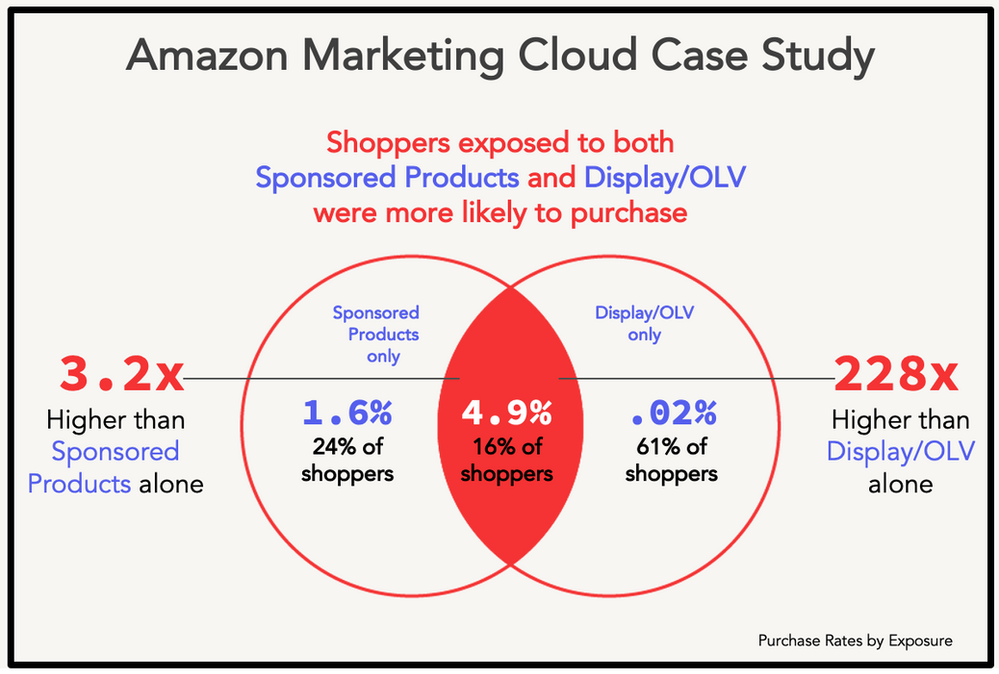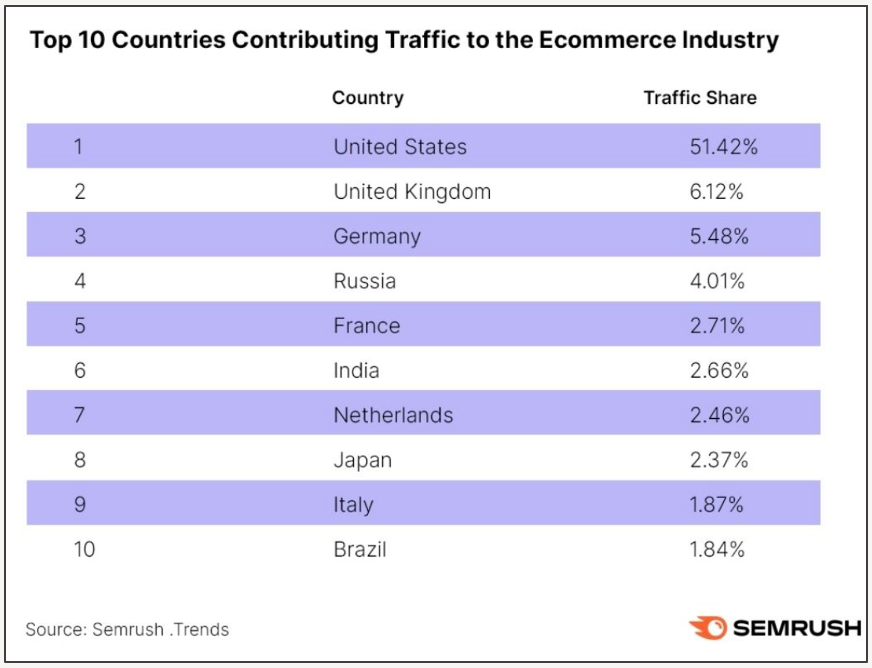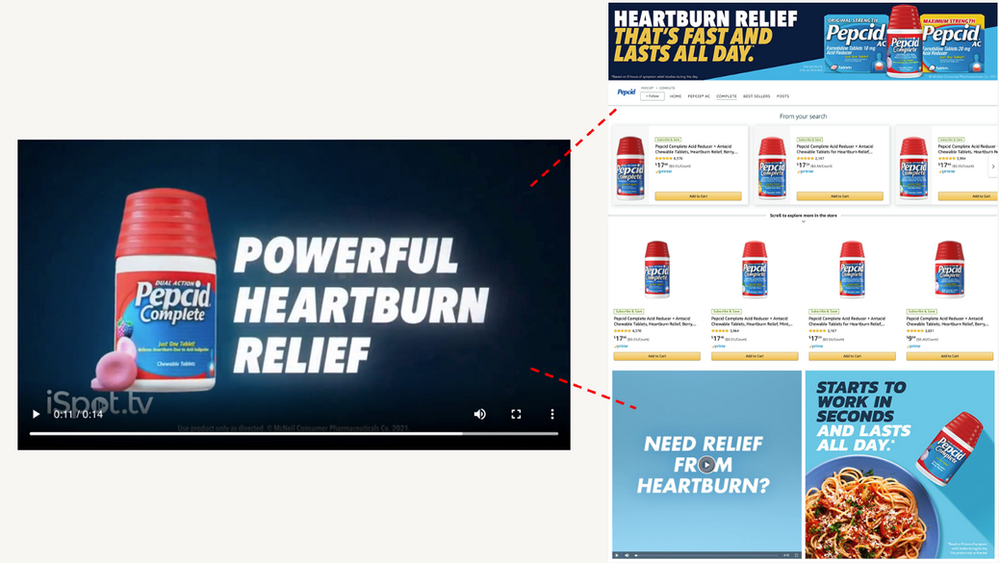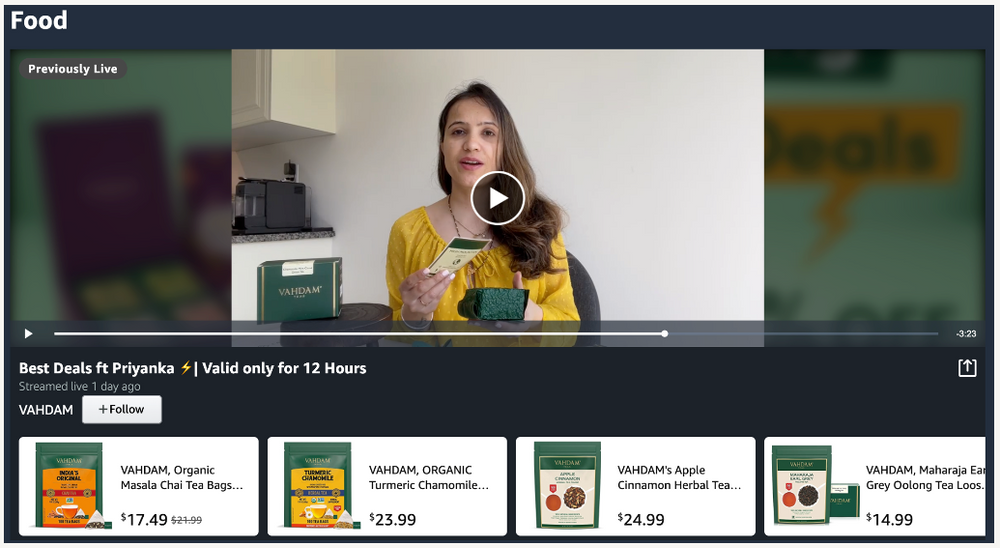By John Willkom, The Mars Agency
Despite its leadership position in the world of ecommerce and its increasing dominance of the overall retail marketplace, many organizations — from the top down — still don’t fully understand Amazon.
Amazon isn’t a retailer, it’s an ecosystem with multiple revenue generators. While most of us hear the word “Amazon,” and think retail, others think Amazon Web Services, Amazon Advertising, Amazon devices, or Amazon TV. For brands, success on Amazon (retail) is about winning a lot of little battles. Here are five ideas for working with Amazon that can help brands drive not just short-term sales, but also long-term growth.
1. Embrace Amazon’s Data Tools
If you’re a big enough advertiser to earn access to the Amazon Marketing Cloud (AMC), the data “clean room” that launched in early 2021, get your team trained and leverage this tool as much as you can.

While the graphic above was designed by Amazon partly to convince brands to spend more money, it also illustrates the insight you can get from AMC data. It shows that advertisers who run a sponsored product ad in isolation, or do the same with a display ad, will get a limited return on each. But if they run both programs together, they’ll get a magnified return like you see in the middle of the two bubbles. This is the holy grail of advertising, where Amazon is attempting to showcase the impact of total programming instead of just individual tactics.
Elsewhere (and much more accessible to smaller advertisers), Amazon Seller Central has a new search query performance tool in beta testing that is awesome. Most brands would agree that Amazon is a notorious black box when it comes to data. But this new tool, which rolled out in April, provides search behavior data for the categories that you play in.
For example, I took a close look at the 52,080 searches for “popcorn” during the week of April 10, and the tool was able to tell me how many impressions, clicks, add to carts, and purchases my brand received. This is market share data 2.0, where we’re starting to see the impact that a brand can have at every stage of the journey based on real shopper search behavior.

I’m also able to look at that data across a slew of search terms. While there are a lot of great modeling and scraping tools on the market that have always gotten us close to the pin, we’ve never gotten all the way there; this tool delivers the real thing.
It’s a little tricky mining this data right now because it’s not downloadable. So you’ll have to get someone into the tool to manipulate it and pull it out. But, it will let you really get into the weeds onf how people are searching for your products to determine what keyword phrases you might want to really focus on. Combine this data with data from an advertising optimization tool, and you’ll quickly have a pretty powerful go-to-market proposition.
2. Consider Exclusive Products
Brands that often run into issues with Amazon’s price matching (and we’ve all been there at some point) should think about launching exclusive products. But it’s not just about avoiding possible price matching — or the fact that Amazon delivers a massive audience of shoppers.

Amazon is probably the best free feedback tool in the world, too. If you launch a product exclusively on Amazon, you’re able to test different pieces of content and price points, run some AB testing on certain parts of your product page, test different keyword strategies with your copy, and gain a clear understanding of how the product is resonating with shoppers.
You can then bring all the reviews that you compile back to the organization to determine if the product is hitting the mark or could use some more work. You might be surprised what you learn about both the product and your brand, as well as about your consumers and what matters to them.
3. Go Global
If you’re really looking to drive significant sales growth on Amazon, think about selling outside of the U.S. We know the power of Amazon here, but if you talk to people in the countries listed in the chart below, Amazon is an increasingly big deal there as well.

There are many opportunities for expansion around the world, and plenty of good service providers that can help you work through things like VAT (value added tax) compliance in the European Union, or language translations in non-English speaking countries, or just making sure that your marketing and messaging is both legal and attractive to local consumers.
This is an area where you should consider doubling down on investments. If you currently only have a few people in some of these markets, figure out how you can pick up the pace and move from walking to jogging in the next six to 12 months.
4. Connect Your Touch Points
Brands often run great national programs with media advertising and above the line promotions, but the messaging they use is nowhere to be found on Amazon. I’ve never understood this thinking. Bringing that same great copy and creative to Amazon through advertising, a brand store, or even just the product detail page would help your media dollars work harder — and also better connect the brand experience for consumers.

If you still have separate, siloed teams in your organization (and we know many of you do), make sure they’re talking to each other so you get the most bang for your buck from a media standpoint by bringing national activity to Amazon.
5. Leverage Amazon’s Programming
Amazon has a lot of effective tools and programs that you should consider leveraging. They won’t all be a fit for your specific brand, and you should develop an evaluation framework to determine which ones might work best, but here are two interesting ones worth a look.
Amazon Live: You can do this for free, and it’s a great way to drive traffic and awareness. In this example, the person recorded a piece in her kitchen to talk about her five best-selling ASINs (Amazon Standard Identification Number).

Audience Targeting: Campbell’s recently rolled out a Spanish-language brand store as part of Amazon’s Spanish language-preferred program. It was a great way to deliver a more personalized experience to a targeted audience through both relevant products and content.

If you work on Amazon, you know that one thing is consistent, and that’s change. By embracing these changes and finding ways to move faster and invest more strategically, you’ll start to add up small wins that will result in better overall performance come year end.

About the Author
John Willkom is SVP-Ecommerce at The Mars Agency, where he helps brands win in the ever-changing world of connected commerce. John has a passion for brand building and discovering “what’s next,” is an avid sports fan and accomplished author, having penned the Amazon best-selling book, Walk-On Warrior, in 2018.
John and his wife, Allison, have two daughters and call Minneapolis home. He can be reached at: [email protected].



